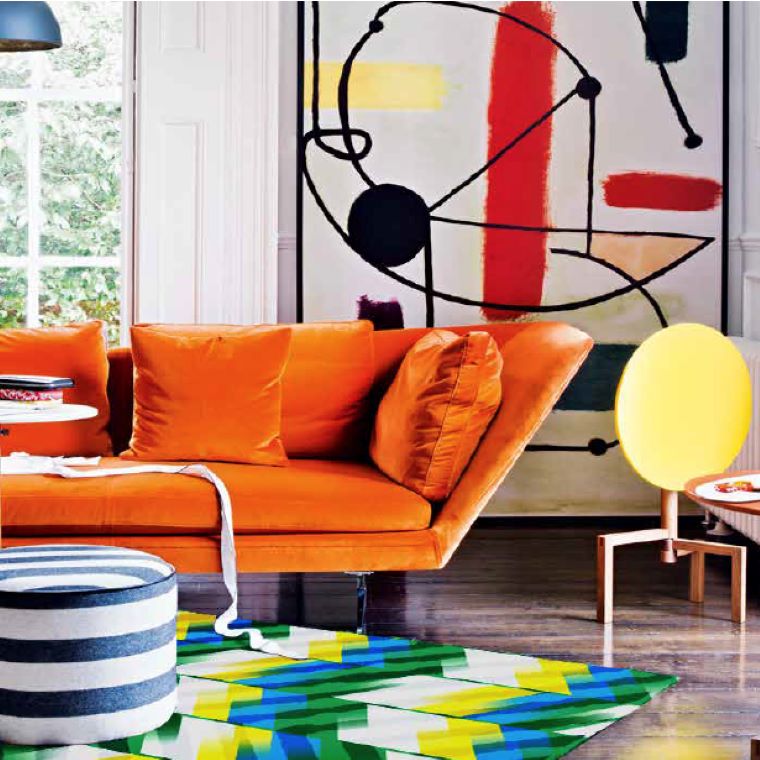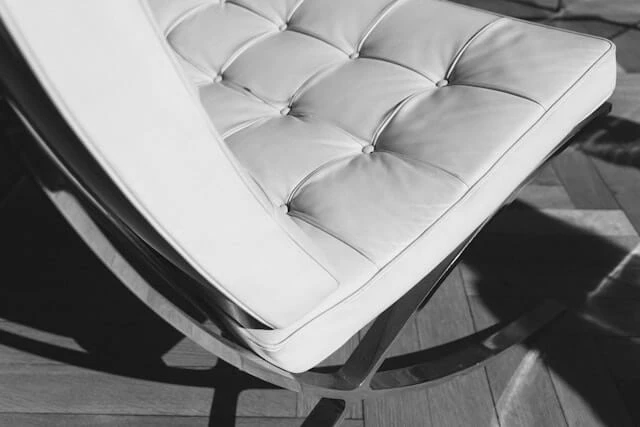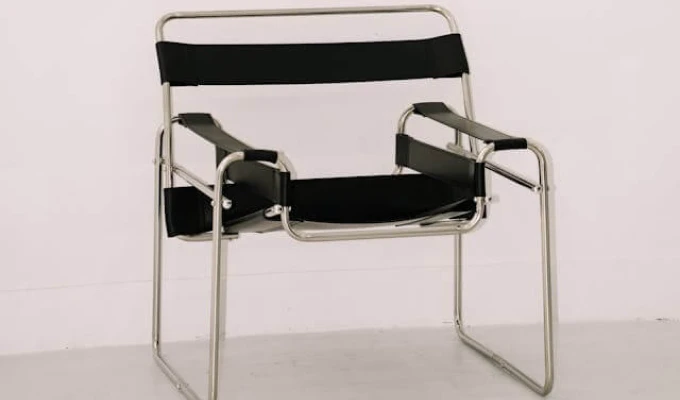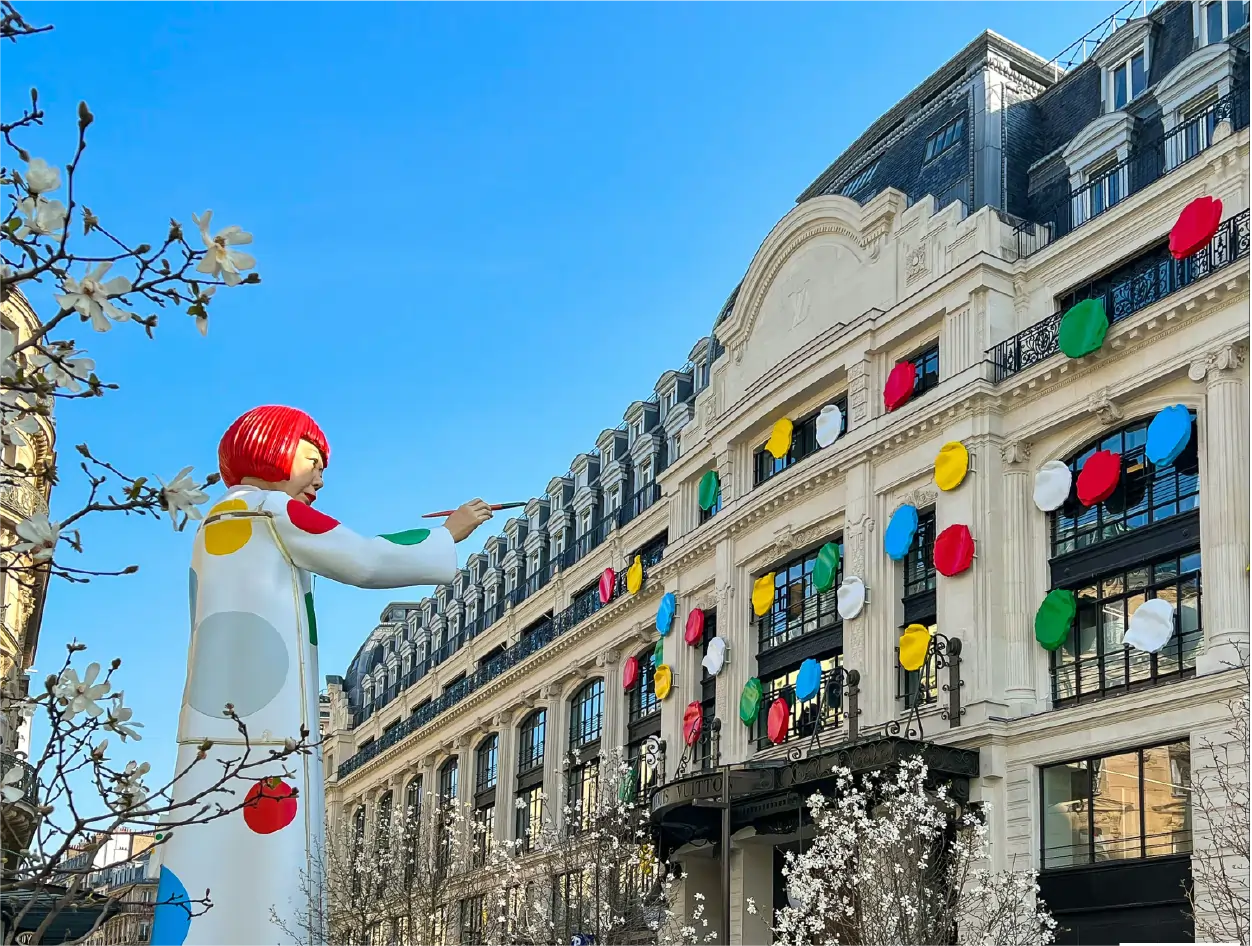Bauhaus & Graphic Design
The ideals of the Bauhaus movement to integrate all art mediums took hold in the graphic design world. Though typography was something that was later introduced in the Bauhaus teachings, it proved to hold significance to the movement’s message and forms. Moholy-Nagy and Herbert Bayer were the pillars of these teachings within the Bauhaus schooling. Graphic design began to take a stake in communication between artists and eventually held its identity in corporate and advertising settings. Typography elements in graphic design emphasize expression and visual clarity. Eventually, photography became another crucial aspect of the Bauhaus design movement in terms of graphic design. Utilizing imagery and san serif typefaces created room for more communication via different mediums and eventually prompted more avant-garde aesthetics into these seemingly rigid and strict spaces in Germany at the time.
Bauhaus Movement in Interior Design
Gropius’s intention in the Bauhaus teaching was to integrate all levels of art in a materialized form. Still, it was only natural that the things he and other department directors created found real purpose in interior design. Cabinetmaking and metalworking were two of the curriculums with a lot of creative distinction. Department director Marcel Breuer inspired students to look at an object’s current existence and re-imagine it to bring it into a minimal form of existence via exploration that pulled away from the conventional. For example, Breuer was fascinated with his bike and the metal steel that held it together. This interest sparked inspiration and motivation to redefine the look of chairs. He eventually created chairs from the steel tubes of a bicycle that proved to be lightweight and accessible to be mass-produced. Hence, re-imagining something already made in the material world, dematerializing it from the original form, and integrating another level of art (metalworking) to redefine a chair’s look, weight, and feel. The same could be said for light fixtures and tableware created with these teachings in mind.
Bauhaus Influence in Fashion, Editorial & More
The Bauhaus design movement took Germany by storm and, soon after, the United States by storm. Principles in typography and photography influenced graphic designs that later became precedents in editorial design. Re-imagining, deconstructing, and re-inventing furniture elements became clear and sought after within the interior design world. But what about fashion? As we dive deeper into history and inspiration, we realize that all these mediums interchangeably communicate. Someone prominent within the Bauhaus movement’s teachings regarding textiles is Gunta Stölzl. Stölzl was the director of textiles during the early years of the Bauhaus movement. As a designer and weaver herself, she stepped into the Bauhaus design movement and emphasized an abstract approach. There was encouragement for experimentation with materials, especially unorthodox ones.
Elements like fiberglass, cellophane, and metal were brought into play in her classes. In addition to the study of color theory, there was room growing for an emergence of thinking outside the box when it came to the creative process of generating fabrics and textiles. Aesthetics in minimalism, color, form, and shape via experimentation of the Bauhaus design movement birthed artists like Anni Albers and influenced designers like Roksanda Ilinčić, Mary Katrantzou, and Jonathan Saunders. Hugo Boss also curated their 2015 Autumn/Winter collection, drawing inspiration from Anni Albers, who became a noteworthy textile artist. Albers also integrated printmaking into her artistic discography. Her art style combined traditional craft and art prompted Hugo Boss to showcase her art on the runway to tie the designs together.






0 Average rating (0 reviews)